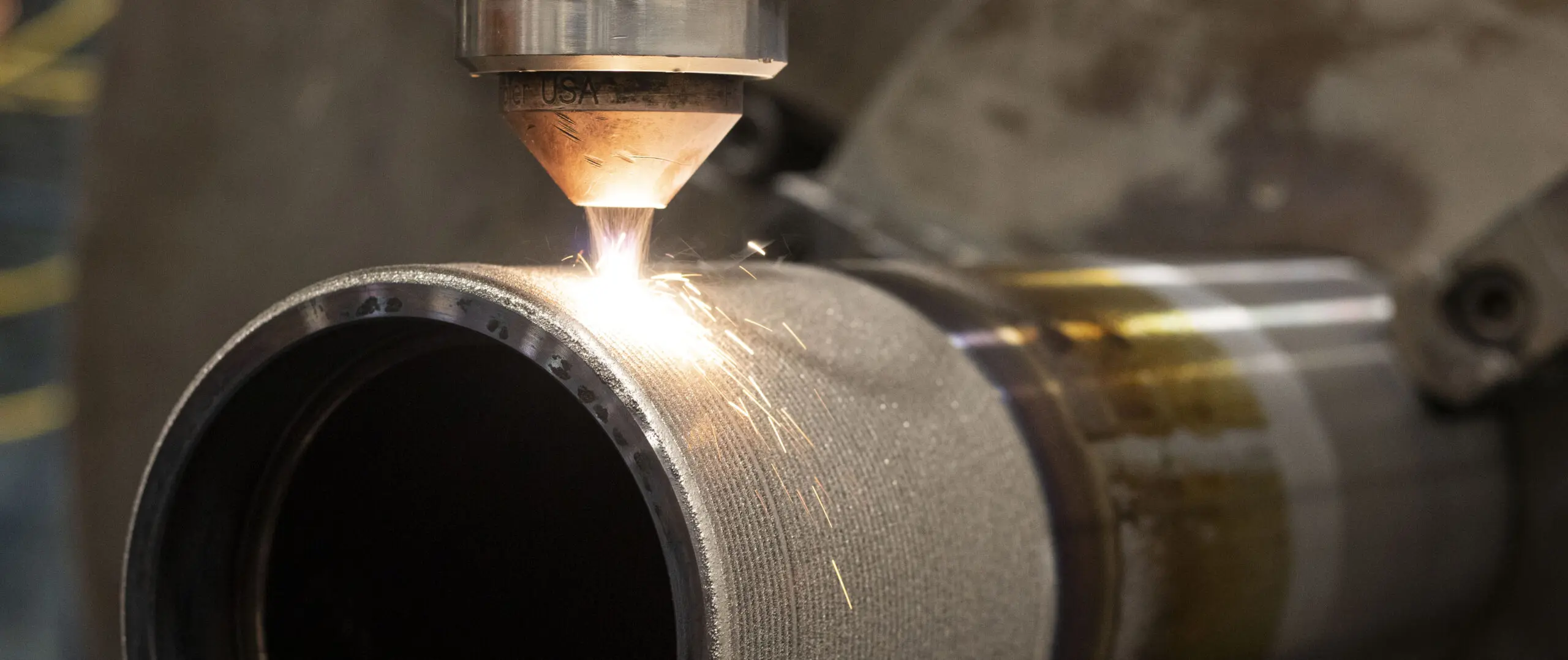Laser cladding (or laser metal deposition) is a free form process that uses a laser as a heat source to create a melt pool and deposit material onto a substrate. This technique is often used to repair or restore worn or damaged parts, or to add new functionalities to an existing part. It is a highly precise and efficient method that can be used to restore or improve a wide range of products, from aerospace components to medical implants.
Advantages of Laser Metal Deposition
One of the main advantages of laser cladding is its ability to deposit material with a high degree of accuracy without altering the base material mechanical/metallurgical properties. The laser beam can be focused to a very small spot size, allowing the operator to deposit very thin layers. This precise control allows for the creation of complex shapes and structures that would be difficult or impossible to achieve with other methods.
Another benefit of laser metal deposition is its ability to produce strong metallurgical bonds between the substrate and the deposited material. A process like chrome plating for instance, where no metallurgical bond is formed, produces surfaces that are prone to cracks and chipping. Laser cladding on the other hand creates strong and lasting metallurgical bonds between the substrate and the deposited material making it ideal for applications where the repaired or coated part needs to withstand high stresses or wear.
In addition to its precision and strength, laser cladding is a relatively fast process compared to the electrochemical process of chrome plating, with the ability to deposit material at rates of up to several kilograms per hour depending on the laser spot size diameter.
Laser cladding can also be used with a wide range of metals including iron-based alloys, nickel-based alloys, cobalt-based alloys, copper-based alloys and MMCs (metal matrix carbide). This versatility makes it a useful tool for a wider variety of applications.
Difference between Laser Cladding and Additive Manufacturing
Laser cladding and additive manufacturing are similar in that they both involve building up layers of material. However, there are some key differences between the two processes.
Laser cladding is often used to repair or enhance the surface properties of existing components, such as adding corrosion resistance or wear resistance with minimal layers. Additive manufacturing is a free-form fabrication process, which 3D prints a functional part with many layers to achieve near net shape parts, which tend to be more difficult to achieve with traditional machining processes.
For more information visit Laser Cladding – Lincoln Laser Solutions




